Nils Frahm's analogue spirituality
The German composer/producer talks us through the creative process behind his 3-hour ambient opus, Music For Animals
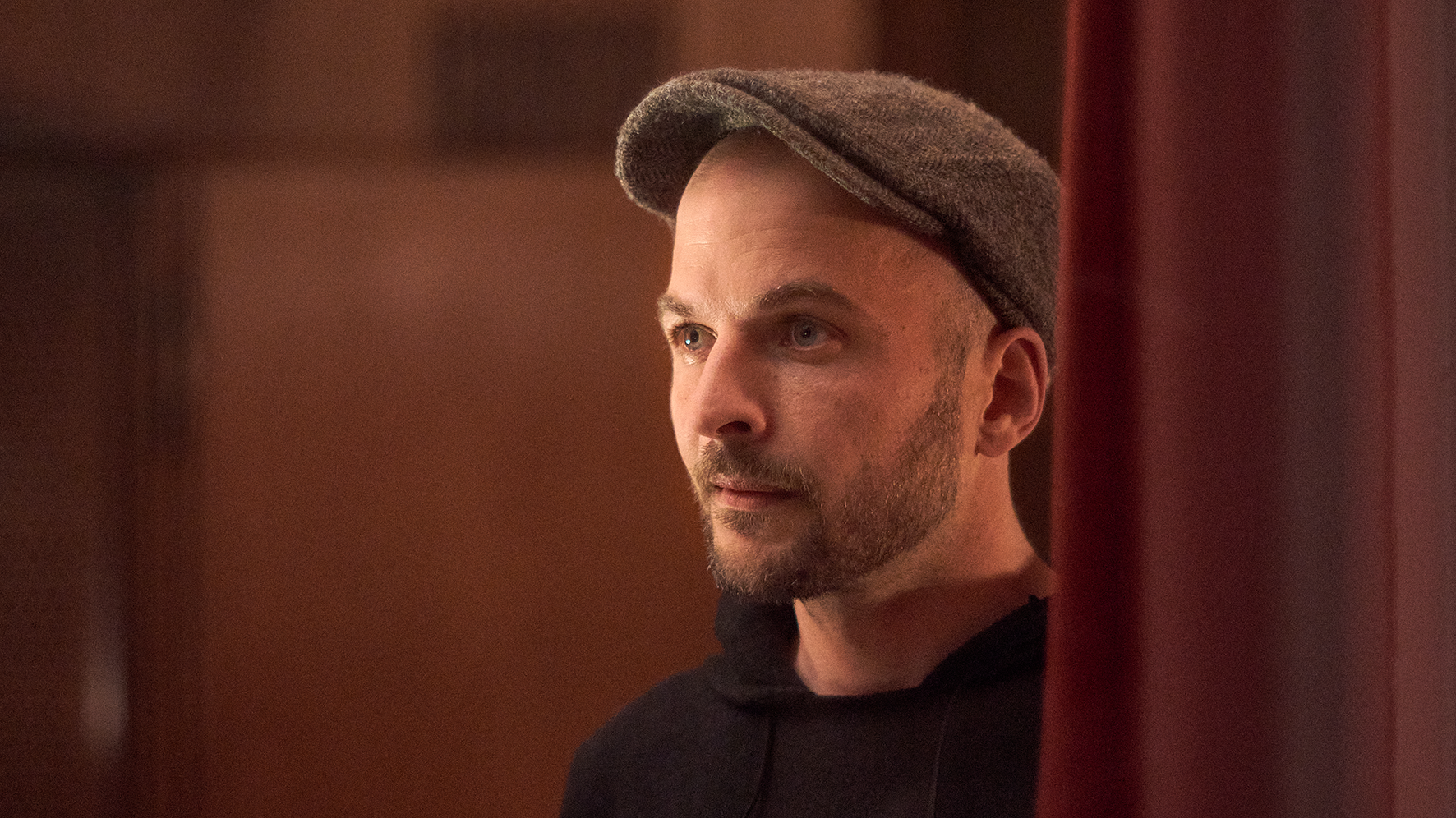
Many artists shun modern, digital equipment in favour of analogue instruments: it’s a story that’s been told through countless interviews with producers, in these pages and elsewhere. But none we’ve spoken to seem to have pondered this preference quite as deeply as Nils Frahm.
The German composer/producer’s fondness for the analogue springs not from gear fetishism or the fusty nostalgia of a chin-stroking purist, but a deep-seated reverence for the sound’s power to evoke something extramusical - something spiritual. “My constant inspiration,” Frahm says of the creative process behind his new album, Music For Animals, “was something as mesmerising as watching a great waterfall, or the leaves on a tree in a storm.”
Meditative moments like these led him to draw parallels between the nature of his experience, the music he was working on and the instruments used to create it. “I wanted to imagine music which works in similar ways,” he tells us. “Sitting at this waterfall, watching the water go, it reminded me of my synthesiser playing an arpeggio. The notes go into my effects unit, and even though it feels like a loop, when you focus on it, it sounds different every round. That's why I love analogue.”
In the tendency of analogue machines to exhibit minute variations in their sound and behaviour, Frahm found something authentic, a sense of imperfection and a constant flux that mirrors something fundamental about the world. Perhaps this goes some way towards explaining why such instruments still find enduring appeal in a technological landscape that’s become dominated by the digital.
“When you sample something digitally with a PCM sound, you sample the same bits, the same exact information," Frahm says. "But when it actually sounds the same - PCM type of same - then I’m dead. It’s dead air, I feel it with my heart. It’s not the waterfall I’m looking at.”
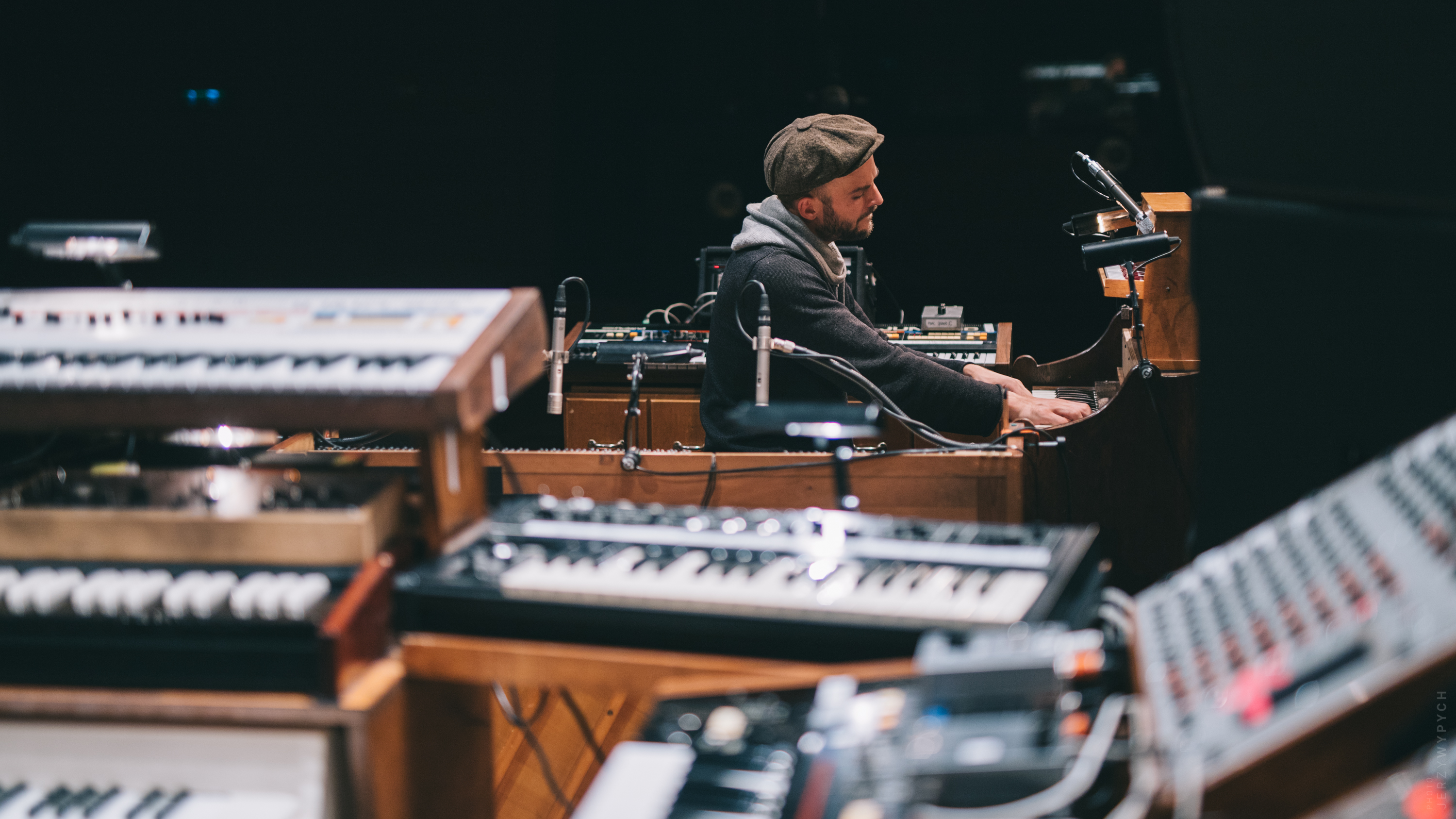
This philosophy lies at the core of Frahm's latest release, Music For Animals. The project was conceived and recorded in Saal 3 of Berlin’s colossal Funkhaus complex, a studio that’s been managed by Frahm since he oversaw an extensive overhaul in 2016. Deconstructed, reconstructed and outfitted with a carefully curated selection of analogue gear, vintage effects units, a custom-built mixing desk and a restored physical reverb chamber, the exquisitely wood-panelled space was first used to record Nils’ previous album, All Melody.
But where that record pushed the studio to its limits, seeing the composer invite a variety of new timbres and textures into his world, his latest represents a move in the opposite direction - from maximalism to minimalism, from All Melody to No Melody. A collection of ten improvised compositions for glass harmonica, pump organ, Mellotron and a handful of analogue synths, Music For Animals finds Frahm abandoning the piano - the instrument with which he made his name - and making the boldest stylistic departure of his career.
Get the MusicRadar Newsletter
Want all the hottest music and gear news, reviews, deals, features and more, direct to your inbox? Sign up here.
The record brings his music further into the ambient realm than ever before, substituting his typically delicate, sentimental melodicism with expansive, sweeping instrumentals that are sparse, haunting and atmospheric. Restricting his sonic palette to a few simple colours, he treats the sounds that remain with the utmost care and attention. They’re lovingly recorded, and given ample room to breathe through the judicious application of reverb and delay.
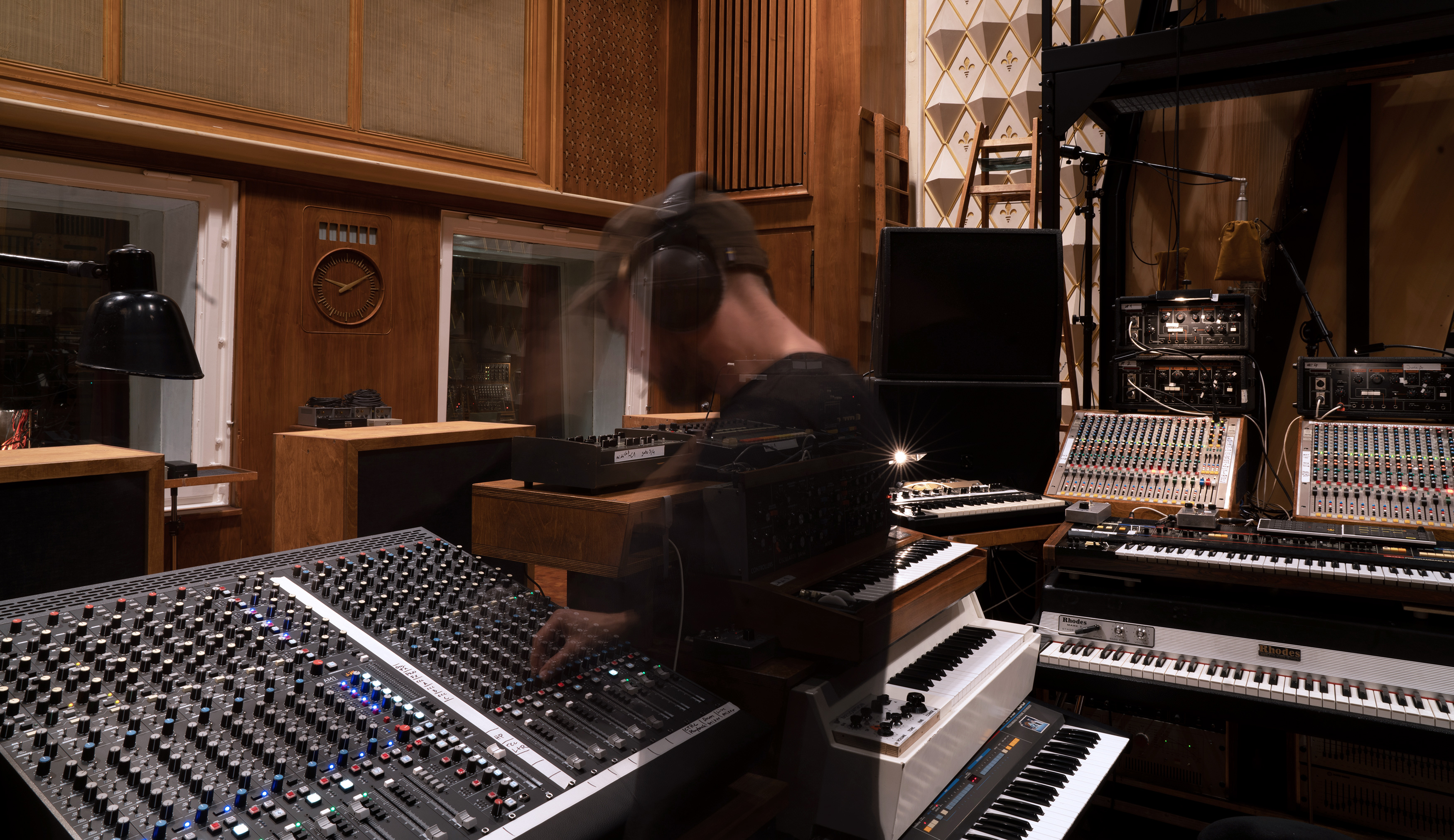
His style has long been spacious and unhurried, but on Music For Animals, Frahm follows these inclinations to their extreme. Over ten tracks, with runtimes that extend well into the double digits, he embarks on a reflective exploration of tone, texture and atmosphere that pushes past the three-hour mark. Plangent chords slowly emerge and dissolve into the ether. Arpeggios run on for 5, 10, or 20 minutes at a time. At the end of “Stepping Stone”, there’s a full minute and a half devoted to the decay of a single note.
This is not a record for the impatient, or those with a short attention span. But it’s a richly rewarding and hypnotic listen, both immersive and near-infinite - an easy way to lose a few hours, and an easy way to lose yourself. In Music For Animals, Frahm touches on something essential about ambient music: its ability to give one pause, to open up the moment in which it’s experienced to a stillness and quietude that verges from the musical into the spiritual.
We spoke with Nils Frahm over the phone ahead of the release of his new project to find out more about the creative process behind its conception.
When did the ideas behind Music For Animals begin to take shape?
“In the beginning of the pandemic, there was a lot going on. I had just finished my world tour, and was taking some months off. We realised okay, there's nothing happening and all of the ideas we had for the year were cancelled. As I was starting the project I was selling a lot of my instruments to clear out the studio, and then we started rewiring the whole setup. I also released some older material which I never had the time to think about in the hectic years before.
“On top of that clean-out process, I received the glass harmonica, the instrument which Nina played on the record. We’d talked a lot about it, and I’d waited for the thing for two years. Finally it arrived, and when I heard her play it - just by accident, because I asked her to - I went to the control room, listened to that, and that moment, the idea for the music took shape.
This album did a lot for me, and I didn't do so much for it
“We didn’t have anything in mind, we were just jamming once a week, having a bottle of wine and some picnic in the studio. It took me a little while to realise that this is actually music I should take seriously. But there was also this nice thing about it, that it didn't feel like one of these more ambitious ideas, where I’m thinking: I’ve got to make a great album, how do I do it? With All Melody, it was much more a case of feeling like I needed to help the album in being great. But this time around the album helped me to stay sane. So I think this album did a lot for me, and I didn't do so much for it.”
What was behind the decision to focus your attention entirely away from the piano on this album?
“It's not really a conscious decision, that I was deciding against the piano. In the pandemic, I couldn't even invite my piano tuner to the studio. I cannot tune the pianos myself, it's very difficult. And so I didn't see that as a big plus, timing-wise, to make a piano album when I needed help for that which I could not have.
“I try not to make my life more difficult than it is already. If I really want to make a great piano record, I need a technician’s support. But with that material, I was able to do all the stuff around it myself. So the only person who was in the studio was actually me and sometimes Nina on the weekend. I had to focus on things I could manage alone.”
What led you towards extending the structures on this record, and writing much longer pieces?
“Normally, my recordings are pretty long, because it's improvisation. I'm not going into the studio thinking okay, I’m writing a song, how long should it be? That is not really the way I do it. I just set up the scenario, a couple instruments, I make a headphone mix, I put on some effects, a little bit like rolling the dice. Then I go with whatever the result is.
To give the moment a chance, you don't give up after three, four or five minutes of playing
“To give the moment a chance, you don't give up after three, four or five minutes of playing. You don’t play the peak moment in the first three minutes. You’re trying to record something you want to listen to again, so you move carefully, so you don't mess it up. Because when you just hit a really bad wrong note, which puts you off, it stops you from getting deeper into the zone. So you're just getting to a point where you’re not disturbed by your own bad ideas, being very humble.
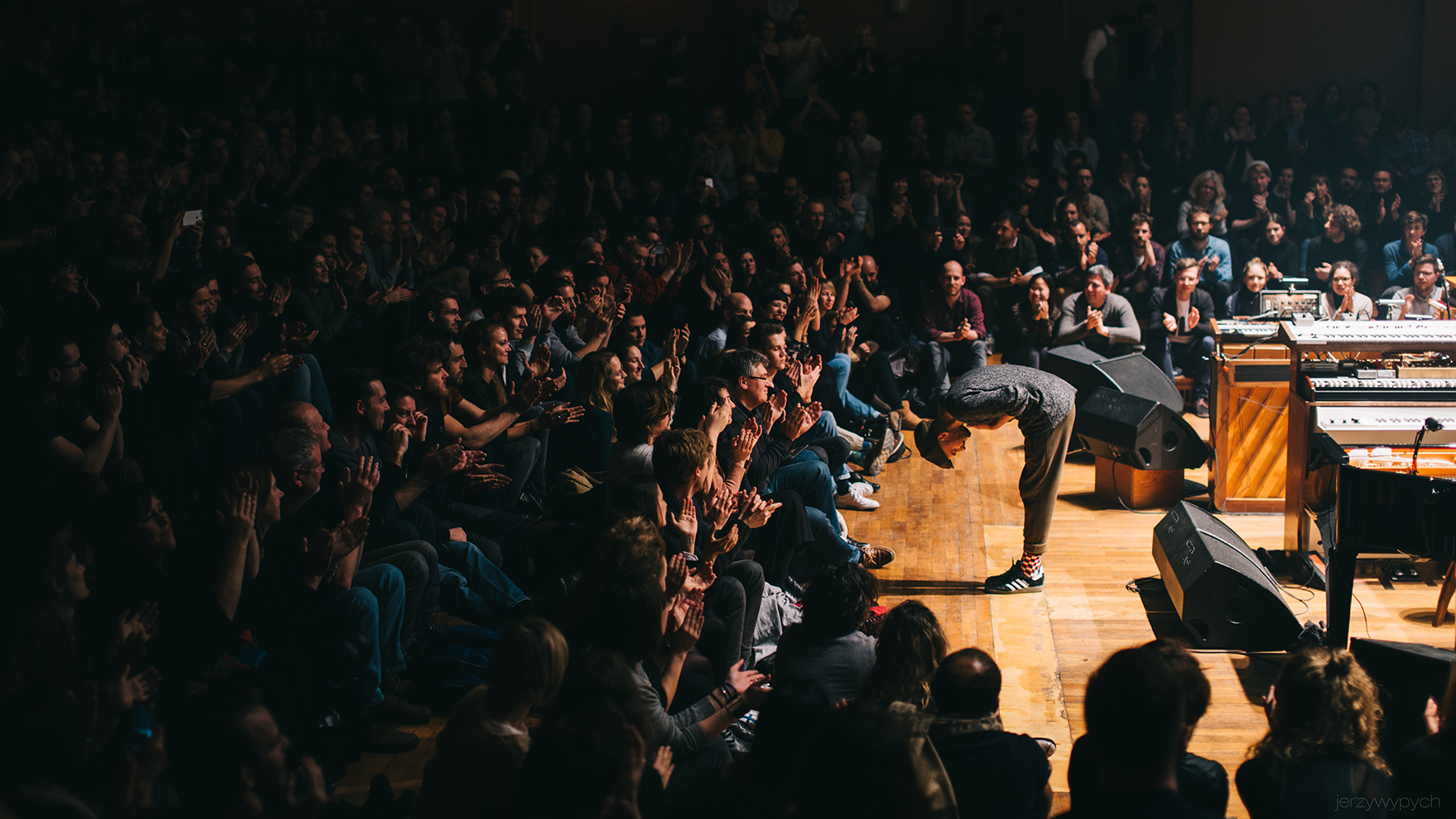
“That approach takes time. I would say after 15, 20 minutes of looking, searching, you - sometimes, not every time - end up in a moment where you enjoy yourself. Then you try to hold that moment in the jam session, that is maybe minute 20 to 40. Then after 15 to 20 minutes of really having a good time with the music, you're probably losing it.
It was interesting on this record to hear us starting from nowhere and ending up somewhere, and then maybe dissolving into nowhere again
“So a session could be easily one hour long, and then I could cut it down. Depends on how short you want to cut your hair, you know? You could cut away basically everything, or you just give it a little bit more span. I didn't want to make it too short. Because that feels so efficiency-driven, like: ‘this is useless, this is useless, we just want to have the creamy bit in the middle.’
“I felt like it was interesting on this record to hear us starting from nowhere and ending up somewhere, and then maybe dissolving into nowhere again. That was the structure of the songs for All Melody too. But for that album, I was more disciplined in cutting it down to its core. Maybe it's a risk and a challenge to have it so long, but you also gain something, which is the space to arrive at a point and enjoy the pass towards it. Like a hike in the mountain, it's slow and ever-changing. For some it's boring, for some it's great.”
Could you pick out a few pieces of gear that were fundamental to the sound of the new record?
“I hope that every piece of equipment we used was pretty much fundamental, because I didn't want to use everything I had. I just used specific things. The room is an instrument for me, the acoustics of the room are really incredible in Funkhaus. And the reverb chamber we are using. We set up a reverb chamber, the physical one, which was not in use for a long time and now we have it back in use, for a three to four second reverb. It sounds incredible.
The effects almost make as much of the music as the instruments which run into the effects
“The mixture of the room sound was that reverb, and that makes everything sound pretty incredible already. Then you can add a little bit of other effects, I use in mixing a lot of tape delays, and some plate delays, which are all old machines. Some older broadcasting reverbs from EMT, plate reverbs. We also have a BX20 AKG spring reverb, which is the ultimate spring reverb, from the ‘70s. It's a really lovely thing.
“The effects almost make as much of the music as the instruments which run into the effects. For me, it's like pinball. The instrument is the ball, and when the ball hits the table, that's the reverb - all kinds of interesting things happen that you never thought would happen.
“The instruments were glass harmonica, pump organ, Minimoog - a wonderful synthesiser I got a couple years ago, it's an incredible sounding thing. From ‘73, it’s one of the very original early one, and it has something to it I've never heard on a Moog. Then the Mellotron is important. The Juno-60s I use quite often, on the arpeggiated synth lines and whatnot. That's basically it.”
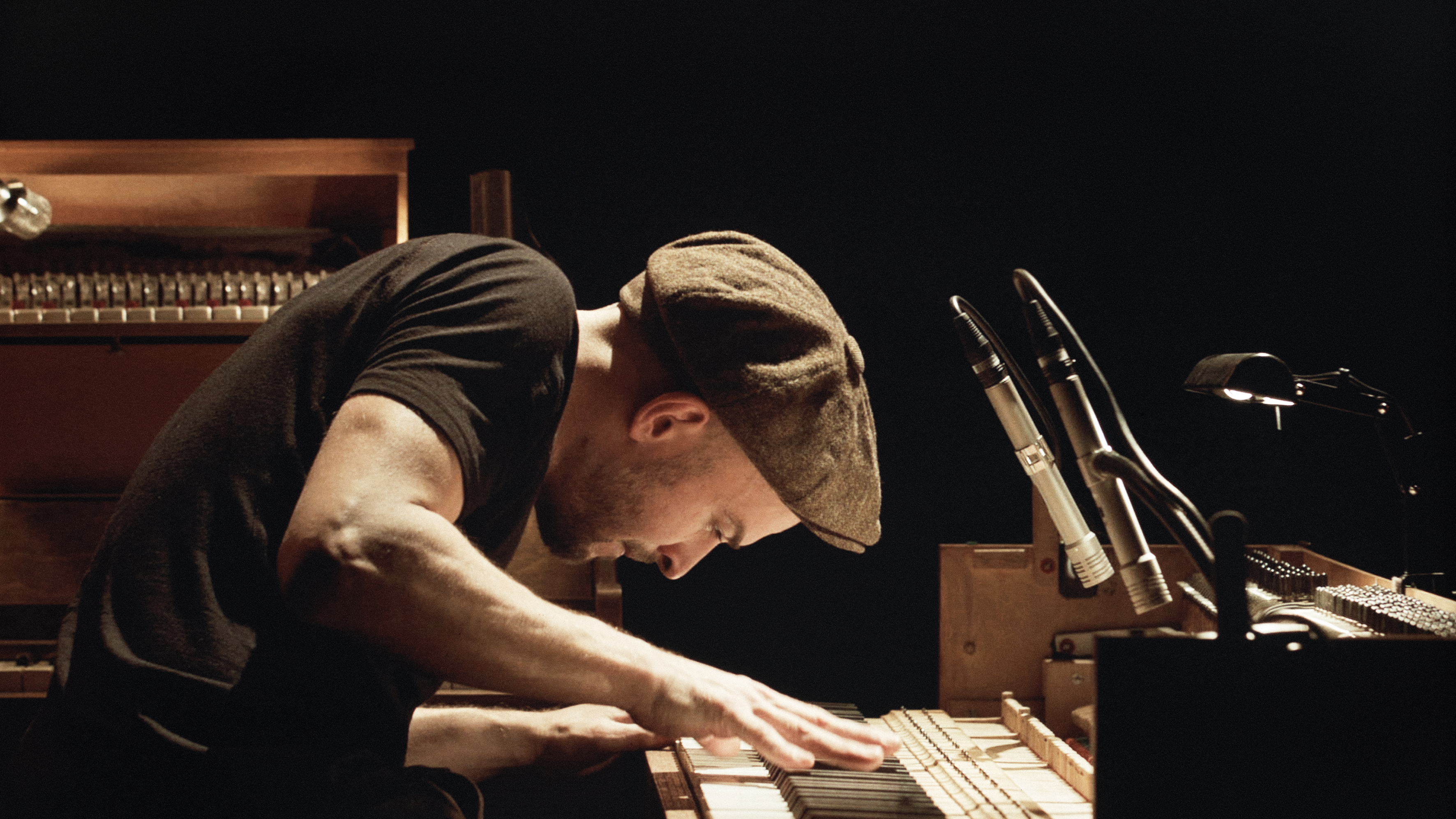
You seem to be drawn to the more classic instruments in the world of synthesizers. Do you ever experiment with anything newer?
“I don't know how to explain it. Again, it’s not a very rational choice that I'm against new instruments. But when I listen to newer synthesisers that everybody seems to love, for example the new Prophet-10, I don't get so inspired by the sound. I also try new things out all the time, because I'm curious. I'm trying the Behringer remakes of the oldest synthesisers. I'm listening to everything I can get my hands on. But it rarely happens that I feel like, okay, now I want to play a song with that.
It's a little bit sad that we cannot build similarly amazing machines today
“The glass harmonica is a new instrument. It was made new, but it's an old style of instrument. For me, it's much more important that I have the feeling that I can get a sound from it which I feel like belongs to me, and it's not a sound that I’ve heard a million times from this or that person. Listening to other people's work helps me to know where I shouldn't go. It's not like I listen to other musicians and I feel like, oh, this is inspiring, I gotta try that. It's bittersweet, when you listen to music from other people which you really love. That is something you love, but you can never do.
“If you use a lot of recent products, which everybody can order at Amazon at this point, the chances are pretty high that, without knowing, you will sound like somebody else. Obviously, if you have the money, you can buy the old synthesiser on Reverb or some other platform, and spend way too much money on it.
“When I bought most of my equipment, for me, that was a good investment, because I would pay very little money for very good machines, very professional-sounding machines. It was very affordable, which is different today, I understand, because now you pay way too much money for old instruments. Because there must be something to them, right? They wouldn't have gained so much in value, if they were actually crap. It's a little bit sad that we cannot build similarly amazing machines today.”
Do you think there’s something misguided about the constant urge to create something new, something better?
“There's definitely a problem with that. I don't know when that happened, that whatever was new also equals better. So you just had to make that neon-coloured ‘new’ sticker on the thing and people would feel like, I should have that just because it's new. It creates a big problem with overconsumption and having the newest things all the time. 'If I have the new instrument, then I will automatically be part of the frontier of innovation.' That is maybe an illusion, because actually you sound like the trend. If you're using what is on the market or hip today, and you're buying that because it seems like you’re part of the future, maybe you're actually already part of the past. You need to be the one who has the thing nobody else has. In art, you can try to be original without consuming.
That is the beautiful thing about being an artist. You can create something new, and the only resource is your mind
“That's maybe the difference. Doing something new and original as an artist is more of a mindful challenge, while having the newest car, or having the newest whatever, is more of an overconsumption problem. So when you ask, is it a bad idea to always want to be fresh, new and all that, I think it is necessary to maybe try to be fresh and new in your mind while using what is already around.
“That is the beautiful thing about being an artist. That you can create something fresh and original and new, and the only resource is your mind. There we should be as innovative as possible. In the physical world, we should use the old things until they can't be repaired anymore.”
You’ve been collecting music technology since you were a teenager. Which pieces have stuck with you throughout your life that are closest to your heart?
“The Rhodes, and my Juno-60. The Rhodes I got from a piano teacher for almost no money. It was very sweet that they supported me. The Juno-60 I bought for 60 Deutsche Mark in the ‘90s when I was maybe 14. I also bought a Moog Prodigy, which I sold because I felt like it could not repair it. When I think about it now, it's the easiest thing to repair, but I was scared of things not working. But it sounded so good, and I bought it for 100 DM and sold it for less, because it was broken. Now, thinking about that I feel quite stupid, but I kept the other things for sure.”
Your studio is quite heavily analogue. What role does the computer play in your recording process?
“I like the computer for what it can do. It's a welcome collaborator in the studio. It's not my favourite piece of machinery, because I'm always scared of it. I never really trust the thing. I'm just happy when it works, and it usually does, so I'm fine. I use it as a tape machine, I don't use plugins, or effects from the computer. I don't use sound generators from the computer. But the computer is a good tape machine for me, because like I described, when I play one-hour takes, often two or three a day, and then I end up with 20-30 hours of jams for a week. And then you would not really be able to afford the actual tape to record it all on.
The computer's not my favourite piece of machinery, because I'm always scared of it. I never really trust the thing
“You would have to constantly think of what you can erase, what you want to keep, you will accumulate piles of tapes. At this point tape costs 200, 300 euros for 30 minutes of recording. Sometimes even 17 minutes, because you want to record in high-speed. And 17 minutes at this point is not really a good length for me. I need more time, and it would stress me out. I'm very happy I can edit and record with a computer. I don't mind that it sounds not as great as on tape. I can hear the difference, but it's a good compromise for me.”
Did you experiment with any new techniques on this record?
“I was more focused on playing on this record. Because I was not alone. When I'm alone I sometimes get bored with playing for myself and I start experimentations which sometimes lead to nothing, often lead to something - you never know.
“But when you’re sharing the studio with someone else and just want to focus on making the music, then you're happy that you can rely on a set of trusted proven sounds, which you know will probably work. So I wasn't really pushing the studio to its limits. That is also cool to do, but you need a little bit more of a team to do that. When you want to do crazy experiments, it's better to be two or three people in the studio and invite other musicians as well.
It's a big privilege to record here, because things sound so good from scratch
“That’s what I've done for All Melody. But in All Melody I was basically trying the studio out and getting to know it. With this album it was more of a nice cruise, knowing the studio. Like always, it's a big privilege to record here, because things sound so good from scratch. No matter where you put the microphone, things just become a completely artistic choice. If you want to have a closer sound, you just put the microphone closer, if you want to have a more roomy sound, you put it further away.
“Sounds logical, but when you work on music, you know that this is the theory, but in practice, that never really is a choice. You have to put the microphones at a certain point where it sounds good. When you put them too far away, you will get too much room sound, then you actually hear you in a bedroom studio or somewhere where it's not a great acoustic. If you mic too close, it gets a boring flat sound, and when you add all the instruments up and everything is close-mic’d, it misses something.
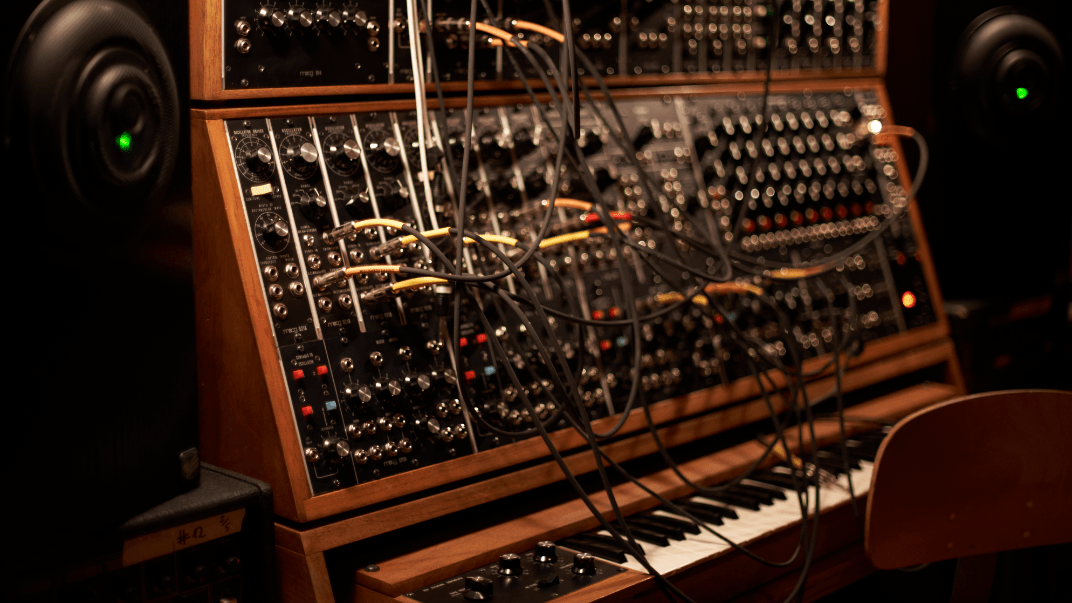
“So I'm wanting to extend the palette of things which are possible in the studio, but I'm also just as happy using it as it is, and accepting that you could experiment, but this is a room where you actually just get stuff done. Because whatever you're trying is actually something you will like, and you just have then to decide, do I want this or that? You just do it, and you won’t regret it, it's not like in the mix later you’ll think, oh shit, I wish I mic’d this piano differently, it sounds horrible now. It’s usually never like that.”
It’s become a space you can rely on.
“Wow, it’s so much easier. I've worked in so many places, and in bedroom studios most of my life. I was constantly needing to experiment to avoid sounding like crap, and if that's your main focus, then you really learn your craft. But now here, I'm afraid I'm not really challenged so much anymore as an engineer, because I have all the stuff I want, all the brushes, all the colours. What do I want to paint? That's the only question at this point.”
I’m interested to find out more about your creative process. Do you have any rituals or habits or peculiarities to the way that you work?
“There is no magic to it. It’s the discipline to be in the studio as much as possible and to keep your equipment ready. I’m not waiting for the muse to kiss me, and then when I feel like oh, it's happening, I go into the studio and imagine what I can do. As we say, in Germany, appetite comes while you're eating. I think it's more like that. I go in the room and play, and if I feel like nothing's happening, I keep on playing until something has happened. If I'm not inspired, then I at least train my fingers or I work on something anyways.
“Failed attempts need to be part of your creative process, because you will never go into a project and just play golden takes one after the other. You will have a lot of bad moments and some good moments. The more time you can afford to spend in the studio around your instruments, the more likely it will be that something happens. I don't know why and I cannot really explain why, but sometimes you imagine something and sometimes you're not imagining something.
Failed attempts need to be part of your creative process
“Often it happens in the evening that I'm getting more free and creative, because maybe the brain needs to be half unconscious to let go. In the morning, I'm analysing the work from the evening before, debating with sober Nils, the rational Nils, not the tired, little bit spaced-out Nils from the evening. Was it only great yesterday or is it also nice in the morning when you actually feel a little bit uninspired? What does it do? How does it affect me?
“Being in the studio with all these different moods and different personas, it turns into a dialogue. I think this talent or constant inspiration is something you should not really worry about. You need to worry about how much time you can spend around your tools without getting overwhelmed or pissed off. You need to be around the instruments as much as possible, and then something will turn out.”
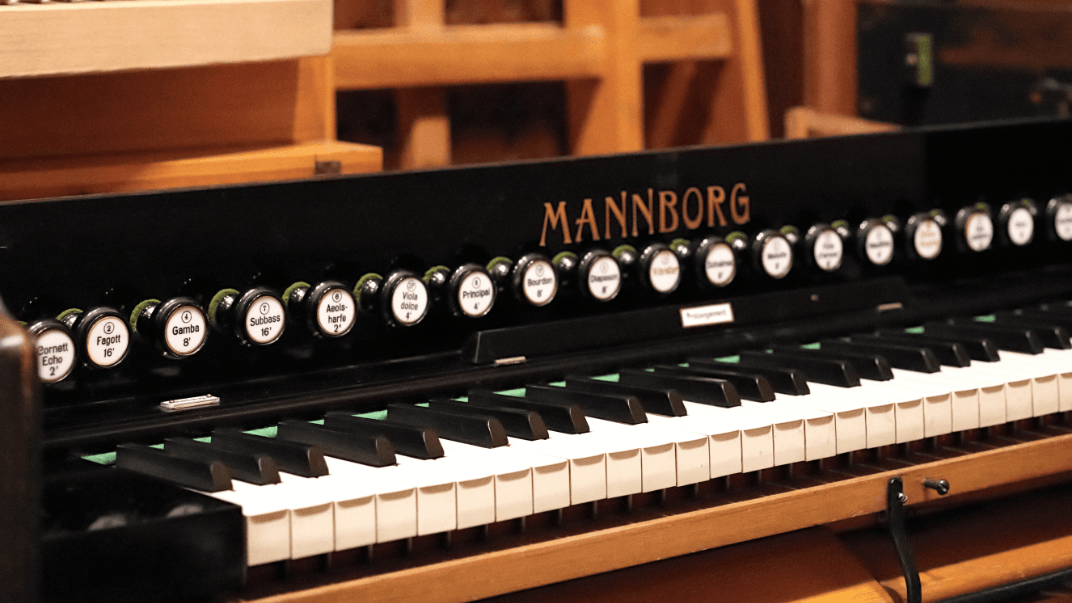
You’ve mentioned that for this album, you were inspired by natural phenomena in writing music that relies less on structure and narrative. Could you tell us more about that?
“All the ideas that I'm offering now, they don't matter, and the music is what it is. I don't have an explanation for why I wanted to hear that. It's a naive process. I cannot even explain why I choose to do what I do in the studio. I take all the freedom I can afford. Because I think this is a place where I can take drastic decisions without being too harmful towards others. In art, you can try to be as uncompromising as possible.
In art, you can try to be as uncompromising as possible
“I felt inspired by more banal things, like when you’re in nature and you hear a car driving by in the distance. You hear that sound of the tires on the asphalt, and actually because you're surrounded by trees, it becomes like an echo-y thing. Your brain tries to follow exactly where the car’s going in the distance, because you don't see anything that you’re hearing. That might really feel like it's a three-dimensional sound.
“Absolutely incredible, when you really think about it. Only when you think about it. When you’re distracted or you're doing something else, and you're hearing that in the background, you will not think it's incredible. But if you really focus on that and you're so quiet inside yourself that you actually can take that in as something exciting, you are experiencing something that everybody's missing out on.
“It comes down to your expectation level. The music is what it is. If you like the record, you have a certain expectation of that music, if you don't like the music, you have a certain expectation of that music. I tried to play with that principle. I understood that everything to do with what is great or not great is made up in my little mind machine. Some time ago, I started to train, to change my perspective for receiving things in multiple ways, trying to change my viewpoint.
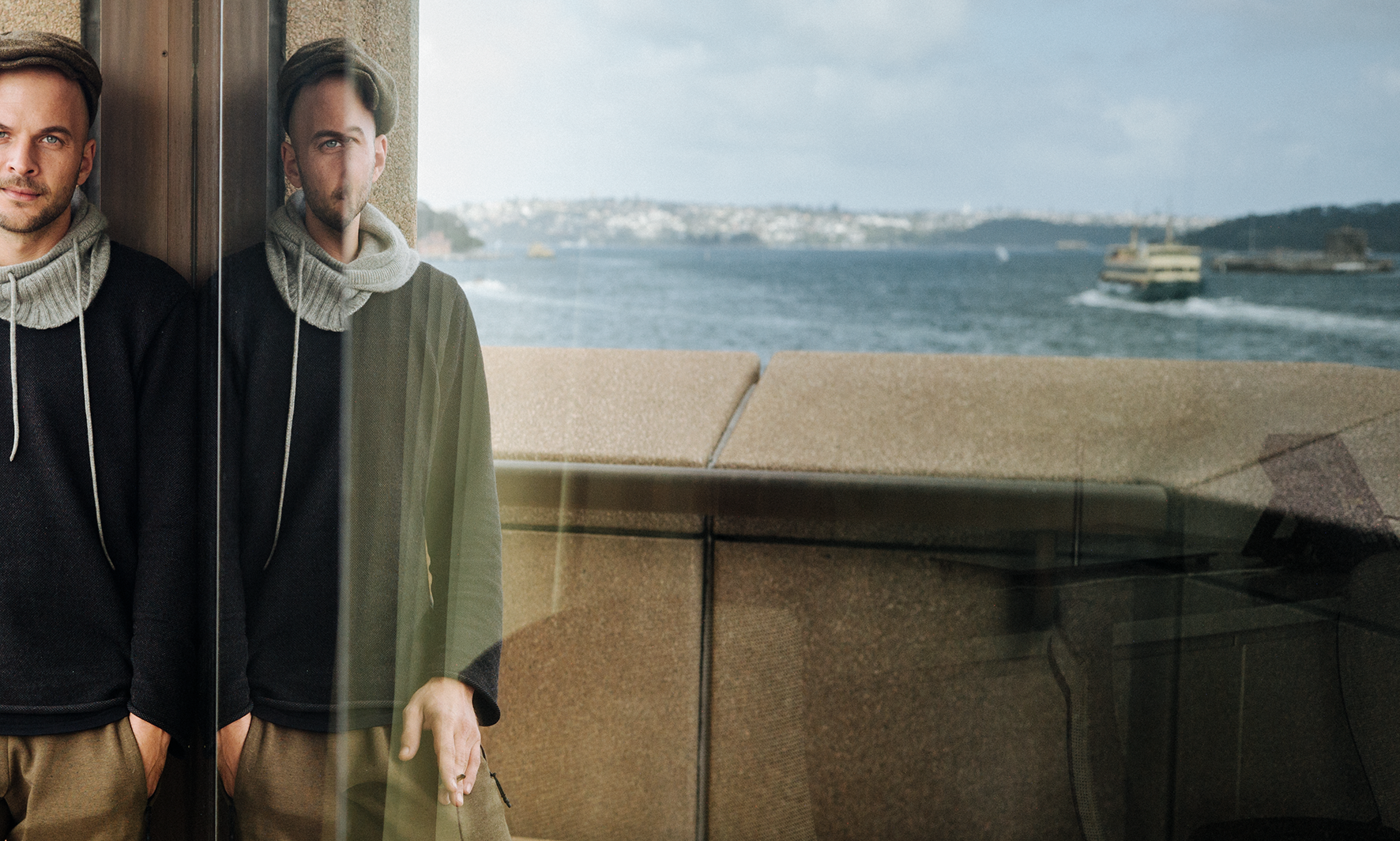
“All of a sudden, I had moments when the sound that the wind makes in a tree gave me an incredible feeling. Or certain other phenomena. When I was watching a little waterfall while hiking in the mountains, resting, sitting there thinking of Siddhartha and Herman Hesse. In Eastern philosophy, the river is a good point for meditation because it's ever-changing and yet always the same. You watch that water flow and you know that every molecule is unique and it passes by, yet it looks like it stands still. It seems to be the same water, yet cannot be the same water.
“Some of these things, they just make me so happy when I think about them. I wanted to imagine music which works in similar ways. Sitting at this waterfall, watching the water go, it reminded me of my synthesiser playing an arpeggio. The notes go into my weird effect unit, and even though it feels like a loop, when you focus on it, it sounds different every round. I can explain technically why that is, and I love it. That's why I love analogue.
Sitting at this waterfall, watching the water go, it reminded me of my synthesiser playing an arpeggio
“When you sample something digitally with a PCM sound, you sample the same bits, the same exact information. You make a hi-hat, you cut that out, and you sample it in a sequencer. When you sample the PCM, it is a glitchy type of experience, and for me that often feels very weird.
“What I prefer is a trigger triggering the drum machine’s noise generator to put an envelope on the noise. Noise is a very organic sound that is never the same, so whenever the envelope cuts a slice out from your noise generator to create a hi-hat with the filter, every hi-hat will have a different sound. Noise, when you analyse it, is ever-changing. It’s a mathematical equation which is random.
“For me, that's the main difference in what really defines my work. I loop things, yes, but I don't loop them with PCM. I never loop a PCM bar. If you want to loop one bar of music, and repeat that bar… it's very difficult. Use a very old cranky sampler, like a 12-bit sample at least, which runs into analogue effects. You turn the filter on each round a little bit. Because when it actually sounds the same, PCM type of same, then I’m dead. It’s dead air, I feel it with my heart. It’s not the waterfall I’m looking at. It's a glitch, it's a fucking glitch. I don't like this glitch. I'm not pleased by it.
Music is my religion. It’s a spiritual language
“Some people might love that computer glitchiness. I loved it when I was younger. Then I learned, I want to use electronics, but I want to have the fundamental principle of that ever-changing water. Or, you look in the fire. You see the flames going up and you think the fire has this size and the flames always go like this. But actually look at it, really look at it, and you will never see the same flame twice. For me, I don't know why but it blows my mind.”
Does spirituality play an important role in your work?
“Absolutely. Music is my religion. It’s a spiritual language. Maybe the words we are using now are good to make business. It’s a nice form to negotiate. But what I actually want to speak about, I cannot tell you now. Whatever I'm saying is just blah, blah, blah. When I want to say something, I play it. It’s language which comes directly from the heart, and is received by the heart.
“In music you can have ten different feelings and thoughts being said and received at once. But when we use language we have linear threads of thought, we cannot communicate ten ideas simultaneously, we have to first talk about the first idea and then connect it with the second and go back and forth. So what I actually want to describe, what I have the urge to express, will never come out of my mouth. I try to describe things with words, but it’s so hard. In music, it’s so easy.”



I'm MusicRadar's Tech Editor, working across everything from product news and gear-focused features to artist interviews and tech tutorials. I love electronic music and I'm perpetually fascinated by the tools we use to make it. When I'm not behind my laptop keyboard, you'll probably find me behind a MIDI keyboard, carefully crafting the beginnings of another project that I'll ultimately abandon to the creative graveyard that is my overstuffed hard drive.









